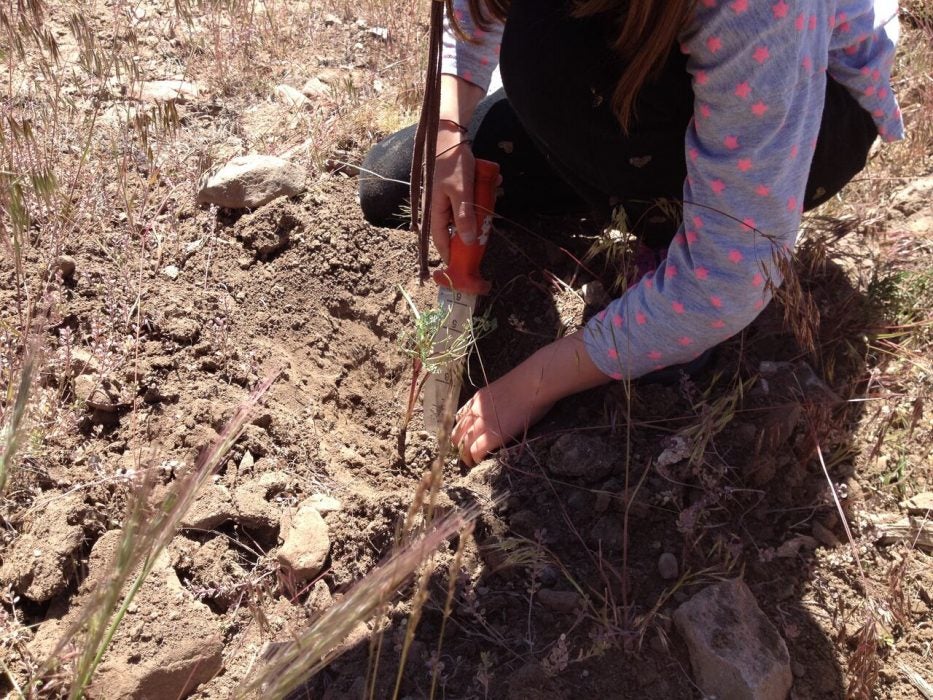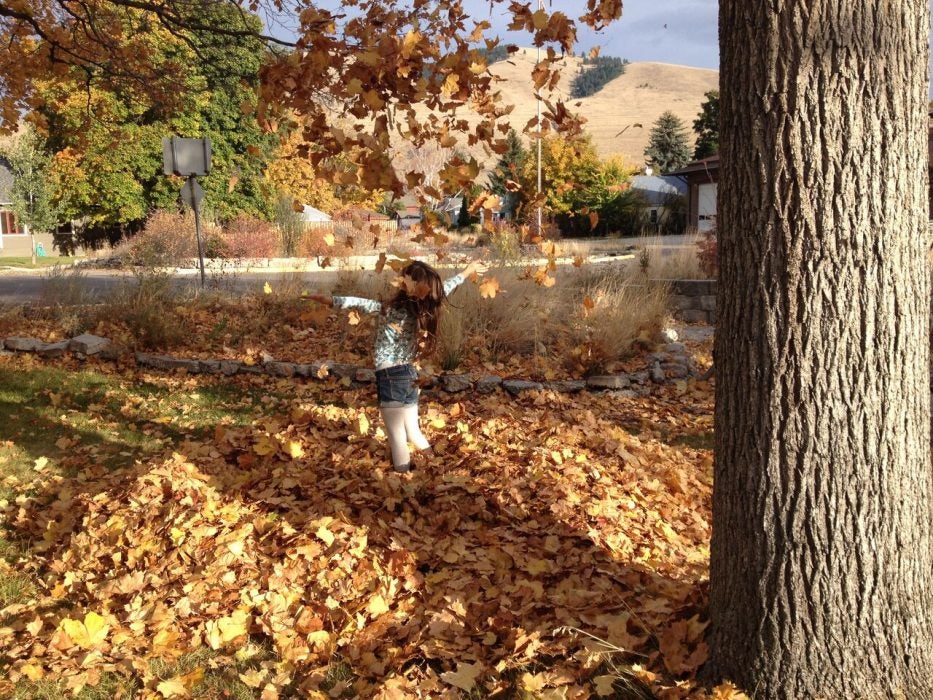Imagine 20 million Americans taking to the streets, rallying in parks and congregating in theaters, schools and universities to protest our treatment of the planet. It’s hard now to picture this, but on April 22, 1970, the date of the first Earth Day, this is exactly what happened. The radical feminist journal Off Our Backs summoned “ecology freaks” and “student militants” to “take to lecture platforms, sidewalks and the streets to demand America change her way of life.” That publication among dozens of others hoped the day would have a lasting effect, but none could have predicted that, an alignment of Earth Day activism with support from the government, would see the creation of the United States Environmental Protection Agency, and the passage of the Clean Air, Clear Water and Endangered Species Acts soon followed. Forty-eight years later, Earth Day is still an urgent reminder that our planet needs help facing the challenges of a growing population and our insatiable appetite for energy and resources.
When my daughter Eve turned three in 2010, Earth Day had become one of the largest secular observances in the world, celebrated by more than a billion people. She has grown up in an environment where recycling and taking public transport are the norm and, like many of her peers, has been plugged into the mindset that it’s crucial to look after our planet. She is ten now and her heightened awareness of the state of the world brings with it a new challenge: how do you talk to your child about ocean acidification, desertification, melting icecaps, plastic in the seas, extreme weather events, and the disappearance of polar bears, rhinos and elephants without filling them with grief and hopelessness. How does one navigate this fine line of teaching a child to respect the environment without passing on the fear of total climate apocalypse?
Weekly Digest
When she was two, the activity Eve enjoyed more than any other was pottering around our tiny patio in London making “soup” in an old yogurt pot. She would chuck soil, dead leaves, petals and anything else that may have blown in from the dirty streets around us and mix it all up with rainwater from flowerpots. Then she would stand on her tiptoes and pour the brown slop into the compost for the worms. They were her pets. When friends talked about their puppies and kittens, she would rave wildly about her worms.

But not all city-dwellers have a few square feet of soil in which to raise a bunch of worms. Urban children are the most likely to suffer from Nature Deficit Disorder—the term coined by Richard Louv, in his 2005 bestseller Last Child in the Woods. In the book, Louv argues passionately for the importance of nature in children’s lives and links a lack of outdoor time to childhood obesity, diabetes, mental illness, anxiety, anger and ADHD. Although the positive effects of nature on children seem obvious to most of us, policymakers and those who see land as something to be paved over, drilled into, mined, or fracked need studies and books to see the benefits of a childhood lived near forests, fields, or in the case of cities, small patches of scrubby, forgotten ground. Over the past half-century, children’s roaming areas have been vastly restricted, especially in cities, because parents fear that their offspring may be abducted, abused or injured. But now, researchers talk about the benefits of Forest Kindergartens in Finland and how deprived teenagers from inner cities thrive when they are handed a compass and a map, and sent off into the bush.
Louv’s points about our disassociation from the environment have been backed up by scientists, philosophers and scholars. A 2002 Cambridge University study found that 80 percent of British children between the ages of four and 11 could identify the names and species of Pokémon characters but only 53 percent of them could name common plants and animals like oak trees and badgers. And this was fifteen years before the release of Pokémon Go, which not only gets kids glued to their screens, but removes them completely from the real world.
After the publication of Last Child in the Woods, Louv co-founded the Children and Nature Network, a non-profit organization with a mission to connect children with nature. Rewild Portland, a non-profit set up by Portland’s Peter Michael Bauer, is a brilliant template for city-dwellers elsewhere who want engage children and their parents with hands-on crafting, foraging and replanting. And the UK is starting to see a rise in Forest Schools, a body set up to increase “educational experiences in the natural world.”
Like many urban kids, my daughter has been lured by Dance Moms and the competitive hysteria of Britain’s Got Talent. But I try, as so many of us do, to let her run free and unsupervised. Where we live in East London, the park bushes hide hypodermic needles, the drunks congregate on benches, and the drug dealers roar up in their cars throwing baggies at the queue of junkies in return for crumpled ten-pound notes. Children, however, are incredibly adept at blocking out the din of adult-created madness in order to connect with the natural world even if for them it’s a patch of grass in a gritty dog-fouled park. As Robert Michael Pyle, the award-winning author of Wintergreen, and other books points out, “we need not tear our flesh in the Wide-Open Wild or gnash our teeth in the Big Bush” in order to come face to face with the power of the natural world. “It is with us almost everywhere,” he reassures us and then recounts how he was changing trains in Portland when he “spent an hour in the fully-artificial gardens outside Union Station, watching a nectaring cabbage butterfly ambushed by a handsome gray and yellow-spotted salticid jumping spider hiding among palm fronds.” He was “utterly transported in that anthropogenic confection no less than in a New Guinea jungle.”

Pyle is perhaps connecting on a level many of us aren’t able to, but he does bring up something I have been thinking about a lot in my ten years as a parent. We should be making sure our children get dirt under their fingernails, mud inside their gum boots, and spiders in their hair, but we also need to somehow allow nature to seep inside them. We need to rewild them from the inside. This is a philosophical shift as much as a physical one. We can achieve this by teaching them not to fear nature, but to embrace it even if the wild for them is a gigantic puddle in a disused railway yard.
There was a time when there were no wild animals, because we ourselves were wild. Children instinctively know this. They have a wildness within that we do our best to civilise. And there’s the rub. We want our children to behave well, to achieve decent marks at school and to land a good job. But maybe we need to tune into another frequency alongside this. Maybe this backseat generation, the kids who are ferried in cars to cello, tae-kwon-do, ballet, and Mandarin classes need us, the adults in their orbit, to focus on something other than grades and achievements. They need us to encourage their connection with the natural world by trusting them to explore it on their own, to rewild themselves without us watching. That alley behind our house might look boring or potentially threatening to an adult, but to a child it could be a place of magic. Pyle is convinced, as I am, that in order to profoundly appreciate the natural world for all its beauty and mystery, we urbanites don’t necessarily have to jack it all in and move to the hills. We and our children can find “The wild, the Other—the stilling phenomena and numina … almost anywhere, from the wild sublime to the pastoral to the vacant lot, which is anything but vacant to a curious kid.”
This is the key to it all. We need to get our children out of the cycle of want and into the cycle of nature. On the days when my daughter watches hour upon hour of TV (usually so I can work), she’s a monster: She wants things and seems dissatisfied with what she has. On the days we wander through a forest or walk the banks of a river, she’s a being at one with herself and the world. I think of this Jekyll and Hyde as being the result of “screen time” versus “green time.”
I have come to realize that one of my jobs as a parent is to tap into the wide-eyed wonder that I once had for nature, so my daughter can find it for herself. In order for her generation to grow up as stewards of the planet, they have to know what’s at stake. I don’t want to fill her with fear of environmental collapse but with awe that so much of it still exists. Celebrating Earth Day is a way of bringing joy back into our connection with the planet. We can forget about the failures momentarily and engage the children in our midst with the movement towards sustainability. The worms in our compost are no longer her pets, but my daughter’s wonder is still there, buried inside and wanting always to be allowed out. It’s my job to let it. The Earth depends on it.







